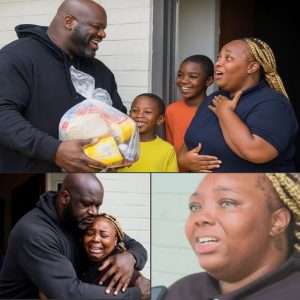When their sixteen-year-old son died unexpectedly, the author’s life was forever altered. She grieved openly — tears in the hospital, at the funeral, and in the quiet corners of their home — but her husband, Sam, remained outwardly stoic. Instead of sharing his pain, he buried himself in work and daily tasks, retreating into long silences. She pleaded with him to open up, but he held everything inside. Over time, the unspoken loneliness and emotional distance became too much; their marriage, once a shared life, cracked and finally ended in divorce.
Years went by, and life pulled them apart. She remarried; he followed his own path. Then, twelve years later, she received devastating news: Sam had died suddenly. There was no chance for closure, no final conversation. The realization struck her with a painful emptiness. In the days that followed, she learned something she had never known — and that revelation changed her understanding of him, and of grief itself.
She was invited to his new wife’s home. Anxious and trembling, this woman told her what Sam had carried in secret: he had cried, deeply and painfully, but only in private. After their son’s death, he would go at night to the lake they had visited together. There, he laid flowers, spoke to their son, and wept until he could barely see. He believed that by hiding his grief — by staying strong — he was protecting his wife. The truth broken open something inside her: all along, she had thought he felt nothing. Instead, he had carried his pain alone.
With her heart pounding, she went to that same lake. Under a tree she found a small wooden box — one he had placed there, filled with letters to their son, one for each year since his death. As she read them in the hush of dusk, she sensed the depth of his love, his sorrow, and his enduring bond with their child. It was as if she finally saw him, not as someone who refused to feel, but as someone who had felt too much — just in a way she hadn’t expected.
In that moment, she redefined what grief means: it is not only shown outwardly, with tears and spoken words, but also carried quietly in the dark, through ritual, memory, and private conversation. She recognized that grief is deeply personal and sometimes silent — but silence does not equal absence. For Sam, mourning was a nightly pilgrimage, a way of safeguarding his own heart while protecting hers. He had chosen to grieve alone, out of love.
Reflecting on her story, it’s clear that grief has many faces. Psychological research supports exactly that: men’s grief often looks different from women’s, not because it’s less profound, but because of how they have learned to process loss. Societal expectations — the pressure to be strong, to be the supporter — often steer men toward hiding sadness and channeling it into action, work, or practical tasks. Grief studies also show that men may be less likely to seek support, talk openly about their pain, or even recognize some of their own grief symptoms. Bereavement support groups note that men may express grief through irritability, physical symptoms, or by “doing” rather than “feeling.”
Importantly, modern grief theory offers frameworks that echo what Sam’s behavior revealed. For instance, the Dual Process Model of Coping describes how bereaved individuals oscillate between confronting the emotional pain (“loss-oriented”) and engaging in restorative life tasks (“restoration-oriented”). This model validates both outward displays of sorrow and quieter, internal coping strategies.
Another relevant idea is the “continuing bonds” framework, which suggests that maintaining a relationship with a deceased loved one — through memories, rituals, or symbolic items — helps many people grieve. What Sam did — leaving letters, visiting the lake, speaking to their son — are powerful examples of continuing bonds in action.
What this story ultimately teaches is that grief cannot be measured by the volume of tears, but by the depth of the connection that remains. Sam’s hidden walk to the lake was not a failure to mourn, but a deeply intimate way of doing so. And for his ex-partner, discovering that secret grief offered healing: she understood him more fully and forgave both his silence and his love. Grief took many forms, but every form carried with it the same heartache — and the same love.





